Regrow! The Process of Vegetative Propagation
Many of you who are part of the Gardening with Edibles initiative would have had a go at growing your very own vegetables using the seeds you received earlier this year. But do you know that you can also grow some vegetables that are bought from the market without seeds?
Yes! This type of propagation is known as vegetative propagation – the process of growing using other parts of the plants other than its seeds.
In this first article of a series, learn more about which vegetables scraps or extra tubers from your market purchase that you can keep to use for growing them again.
1. Cocoyam (Colocasia esculenta)
The Cocoyam produces tubers rich in starch. The plant grows well under partial shade or lots of sun, and with lots of water or while emersed (that is, rising slightly above the top of the tuber). You can grow the Cocoyam using its tubers.
-
Select a large corm.
-
Prepare a pot of fertile loamy soil.
-
Bury the corm in the middle, allowing about a quarter of it to be exposed above the soil surface.
-
Place the pot in a semi-shaded area and water the corm daily.
-
The corm should begin to develop roots and grow new leaves after about 30 days.
Alternatively, you can plant the entire tuber straight into well-draining, fertile soil.
2. Giant Taro (Alocasia macrorrhizos)
Photo credit: Pauline Tay
Often confused with the Cocoyam, the Giant Taro is a much larger plant but it also produces tubers that are rich in starch. The plant grows well under partial shade or lots of sun, and with lots of water or can also grow emersed. You can grow the Giant Taro using the tubers.
-
Cut about one-third of the tuber.
-
Use four toothpicks and skewer the section on all four sides, at about the top one-third point of the section.
-
Place the skewered section in a glass of water and ensure that about half of it is submerged in water.
-
Place the glass of water in a semi-shaded area.
-
Remember to change the water regularly to prevent fouling and breeding of mosquitoes.
-
The section should begin to develop roots and grow shoots after about 30 days.
-
Once the section has rooted and grown shoots, you can transplant it into a pot of fertile soil.
Alternatively, you can plant the entire tuber straight into well-draining, fertile soil.
3. Sweet Potato (Ipomoea batatas)
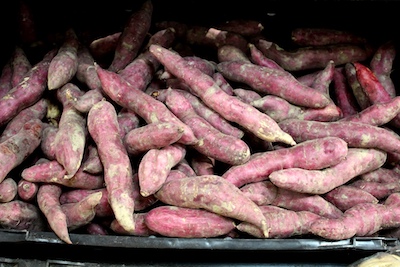
-
Cut about one-third of the tuber.
-
Use four toothpicks and skewer the section on all four sides, at about the top one-third point of the section.
-
Place the skewered section in a glass of water and ensure that about half of it is submerged in water.
-
Place the glass of water in a semi-shaded area.
-
Remember to change the water regularly to prevent fouling and breeding of mosquitoes.
-
The section should begin to develop roots and grow shoots after about 14 days.
-
Once the section has rooted and grown shoots, you can transplant it into a pot of well-draining, fertile soil.
3. Cekur Manis (Breynia androgyna)
The leaves are harvested as vegetable can can be eaten raw, boiled, or stir-fried. They can be propagated by seed, but this can be done much easier using stem cuttings.
-
Select a semi-woody cutting/stem.
-
Cut the stem to about 10–15 cm long.
-
Remove the bottom leaves of the stem, leaving the top part with three or four leaves.
-
Plant the cutting straight into moist, fertile, loamy soil and water daily.
-
You may also dip the cut end of the stem into rooting powder for a higher success rate in rooting.
5. Kang Kong (Ipomoea aquatica)
Photo credit: Jennie Tang
A popular vegetable locally, often stir-fried with sambal belacan, the Kangkong is also a rather fuss-free plant to grow. It can be easily propagated from stem cuttings bought from the market.
-
Select a stem with at least five leaves.
-
Cut the bottom of the stem, leaving about 5 cm of the cut end to the lowest leaf.
-
Remove two to three leaves at the bottom part of the stem.
-
Place the cutting in a glass of water.
-
Remember to change the water regularly to prevent fouling and breeding of mosquitoes.
-
The cutting should begin to develop roots and grow shoots in about 14 days.
-
Once the cutting has rooted and grown shoots, you can transplant it into a pot of moist, fertile, loamy soil.
-
You can also stick the cutting directly into soil, skipping steps (d) to (f), and going directly to step (g).
5. Wolfberry (Lycium chinense)
Often known for the fruit used in Traditional Chinese Medicine and in Chinese cuisine, the young leaves and shoots of the Wolfberry are also eaten as vegetables. While you may find the plant occasionally in wet markets, and you can also grow it at home from stem cuttings.
-
Select a semi-woody cutting/stem.
-
Cut the stem to about 10–15 cm long.
-
Remove the bottom leaves of the stem, leaving the top part with three or four leaves.
-
Plant the cutting straight into moist, fertile, well-draining soil and water daily.
-
You may also dip the cut end of the stem into rooting powder for a higher success rate in rooting.
Learn more about growing spices & garnishes as well as herbs in the next few articles in this series.
Gardening with Edibles
The City in Nature vision seeks to bring greenery closer to all residents. The community plays a key role in the ownership and stewardship for nature which will benefit our health and well-being.
NParks is partnering residents to make Singapore our City in Nature and spark a love for community gardening through the Gardening with Edibles initiative launched in June 2020. Under this programme, some 400,000 free seed packets have been distributed to interested members of the public. Relevant resources are also available online, to guide gardeners along the way.
Also, NParks is expanding the allotment gardening scheme and the Community in Bloom programme, to welcome even more residents into the gardening family.
The Gardening with Edibles initiative is aligned with Singapore’s national strategy to strengthen our food resislience. The “30 by 30” goal, led by the Singapore Food Agency, aims to produce 30% of Singapore’s nutritional needs locally by the year 2030. The programme is jointly funded by founding partners DBS Bank and Tote Board through the Garden City Fund.
Learning More
If you are a gardening newbie, visit NParksSG, our refreshed YouTube Channel that serves as a one-stop repository for close to 300 video resources. It covers topics ranging from types of soil needed for your garden and how to plant, harvest and even cook your edibles.
For more information about the flora and fauna found in Singapore, please visit Flora and Fauna Web.
If you like what you read, follow us on Facebook, Instagram and Telegram to get the latest updates.
Text by Ang Wee Foong
Photos by


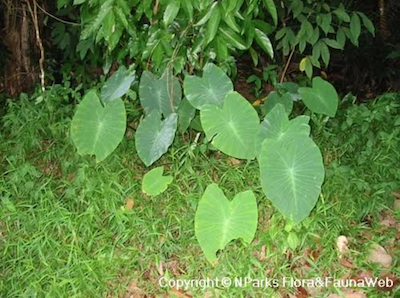
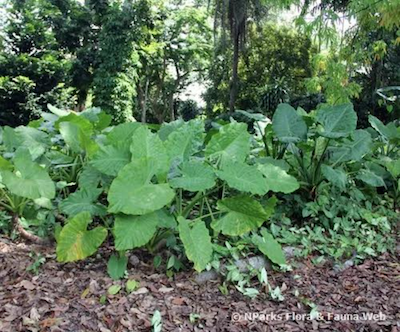
.ashx)
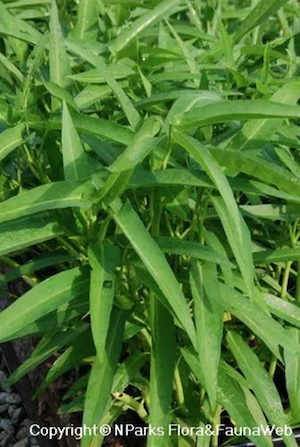
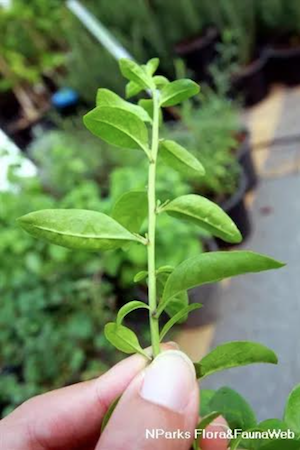

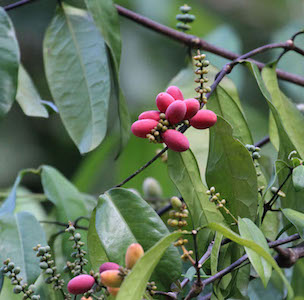
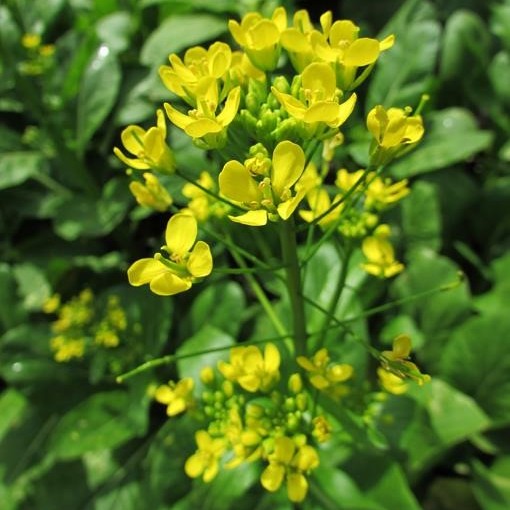
Have views or comments on this article? Let us know via this form. If you would like to give us feedback on any other areas relating to our parks and gardens, please submit via https://www.nparks.gov.sg/feedback